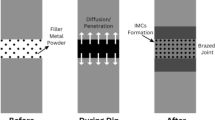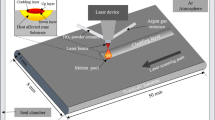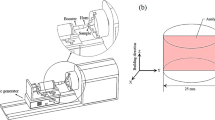Abstract
The roles of titanium in active brazing of SiC have been studied extensively, while studies on the roles of silver and copper, which constitute the major parts of the active brazing alloys, have been overlooked. The effects of the relative contents of silver and copper in the brazing alloy on the interfacial reactions and bond strength have been investigated in this study. The interfacial reactions can be divided into the decomposition reaction of SiC by the brazing alloy melt and the interfacial reaction of titanium with SiC. Brazing by the Cu-5at% Ti alloy induced SiC to be decomposed, but the addition of silver to the brazing alloy suppressed the decomposition of SiC. TiC and Ti5Si3 was produced from the interfacial reactions of titanium independent of the brazing alloys. However, their morphologies and formation mechanisms differ greatly depending on the relative contents of silver and copper. The bond strength and fracture modes are also dependent on the relative contents of silver and copper. A good bond strength of 159–178 MPa was obtained by brazing with the Ag-5at% Ti alloy at 985°C for 600 s and fracture initiates at the interface of the reaction product layer and propagates through SiC.
Similar content being viewed by others
References
T. Okuo, Y. Kusaka andY. Aiyama,J. High Temp. Soc. 11 (1985) 186 (in Japanese).
T. W. Eagar,Weld. J. 66 (1987) 35.
H. Mizuhara andE. Huebel,ibid. 65 (1986) 43.
J. K. Boadi, T. Yano andT. Iseki,J. Mater. Sci. 22 (1987) 2431.
T. Yano, H. Suematsu andT. Iseki,ibid. 23 (1988) 3362.
H. Sakao andJ. F. Elliott,Metall. Trans. 5 (1974) 2036.
O. Kubaschewski andC. B. Alcock, “Metallurgical Thermochemistry” (Pergamon Press, Oxford, 1979).
G. G. Gnesin andYu. V. Naidich,Sov. Powder Met. Metal Ceram. 74 (1969) 128.
V. N. Eremenko, Yu. I. Buyanov andN. M. Panchenko,ibid. 89 (1970) 410.
J. A. Pask,Amer. Ceram. Soc. Bull. 66 (1987) 1587.
D. A. Mortimer andM. Nicholas,J. Mater. Sci. 8 (1973) 640.
T. Iseki, T. Yano andY. S. Chung,Jpn Ceram. Soc. Bull. 97 (1989) 710 (in Japanese).
A. J. Moorhead andH. Keating,Weld. J. 65 (1986) 17.
H. K. Lee andJ. Y. Lee,J. Mater. Sci. Lett. 11 (1992) 550.
M. Backhaus-Ricoult, in “Proceedings of the International Workshop on Bonding, Structure, and Mechanical Properties of Metal/Ceramic Interfaces”, Santa Barbara, January 1989, edited by M. Rühle, A. G. Evans, M. F. Ashby, J. P. Hirth (Pergamon Press, Oxford, 1990) p. 79.
Author information
Authors and Affiliations
Rights and permissions
About this article
Cite this article
Lee, HK., Hwang, SH. & Lee, JY. Effects of the relative contents of silver and copper on the interfacial reactions and bond strength in the active brazing of SiC. J Mater Sci 28, 1765–1774 (1993). https://doi.org/10.1007/BF00595743
Received:
Accepted:
Published:
Issue Date:
DOI: https://doi.org/10.1007/BF00595743




